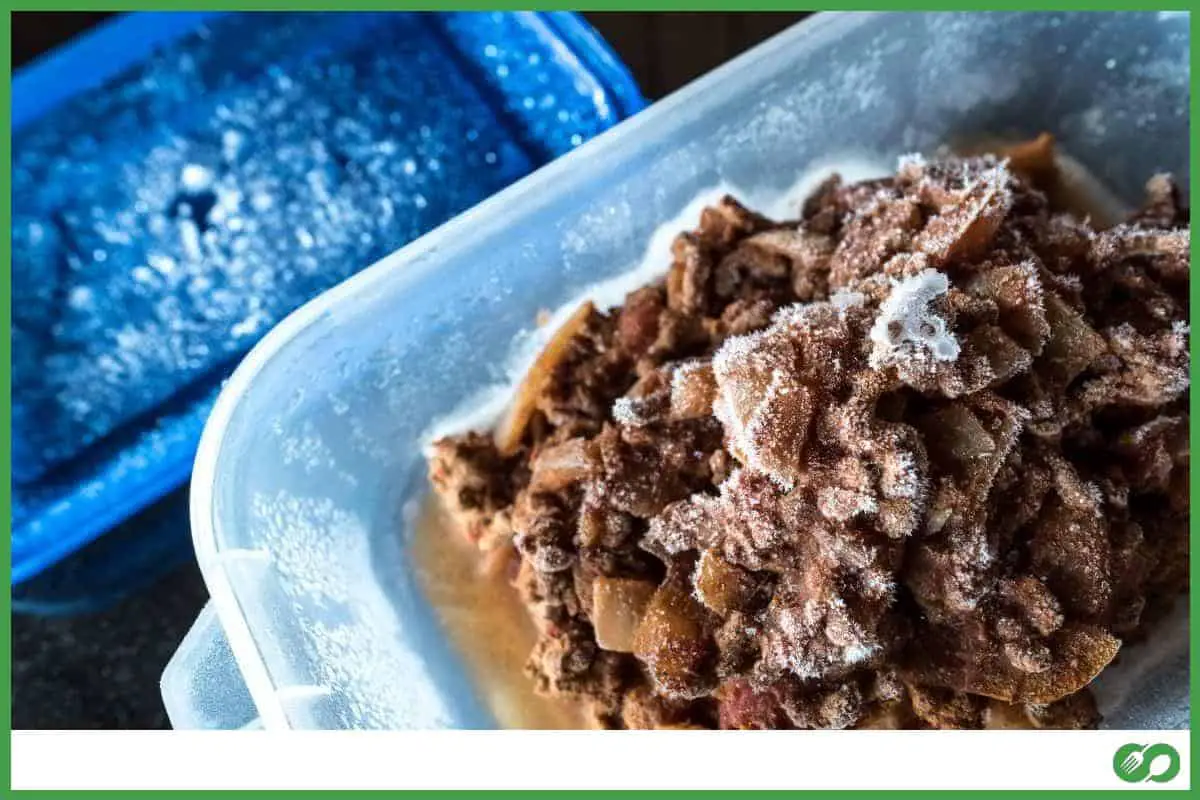How to Reheat Frozen Bolognese (The Best Way)
This post may contain affiliate links which means that, if you choose to make a purchase, I may earn a small commission at no extra cost to you.
Bolognese is one of those types of foods you can cook in bulk and save for later. Some use it for meal prep, while others like having a ready supply of it for their family meals. Whatever the case might be, it takes a bit of know-how to reheat frozen bolognese and make it taste good.
After you’ve defrosted your frozen bolognese, you can reheat it on the stove, in an oven, or even in a microwave. If you’re not pressed for time, using a saucepan on a stove is the best as it’ll reheat bolognese thoroughly. You could leave it in the oven, as well. Microwaves are convenient, but you must stir the sauce at regular intervals to reheat the sauce evenly.
In this article, we’re going to explore everything you need to know about reheating frozen bolognese. We’ll begin by exploring some basics about bolognese sauce before looking at how to prepare it using a stove or microwave.
What You Need To Know About Bolognese Sauce

Before we dive into the step-by-step information on reheating bolognese, here are a few helpful things you must understand about the sauce you’re working with.
Sauces Thicken When You Reheat Them
First and foremost, you must know that your bolognese sauce will naturally become thicker when you reheat it, regardless of the method you’re using. Thankfully, you can prevent this by adding:
- Water, or
- Skim milk, or
- Chicken broth.
Suppose this is your first time doing this. If that’s the case, then you’ll want to be cautious with how much of these liquids you add to your bolognese. Stay on the safe side and only add a little bit at a time.
Even though excessively thick and chunky bolognese is unappetizing, you don’t want to make your sauce too watery either!
Should You Store Pasta Separate From The Bolognese Sauce?
Here’s one of the most commonly-asked questions about frozen bolognese sauce: should you freeze the sauce with pasta mixed in or separately?
The answer is pretty straightforward. Ideally, both should be frozen separately from each other to prevent the pasta from becoming soggy and unappetizing.
Why would this matter? Well, it’s so that you’re not caught by surprise when you reheat your frozen bolognese and find the pasta inside to be soggy. However, if that happens, you might want to consider making a fresh batch of pasta to enjoy with the sauce while being more mindful the next time you freeze any more bolognese.
How To Freshen Up Reheated Bolognese
Reheated bolognese sauce will probably never taste as good as when it was freshly made. As sad as that may sound, you’ll be glad to know that there are ways to freshen up that sauce and make it almost as good as a fresh serving!
Add in some fresh cheese and any spices that you used in the original recipe. By doing that, you’ll ensure that most of the sauce’s flavors are fresh, even though it came from a sauce that was previously frozen.
Here’s a word of caution, though: don’t go overboard with the fresh cheese and spices. A little extra cheese might be fine, but too much spice will give that sauce an overpowering taste.
It’s true what they say: there is such a thing as ‘too much’ of a good thing!
Defrosting Frozen Bolognese
Before you can reheat a solid block of frozen bolognese, you’ll need to defrost it first.
The safest way to do that is by transferring the sauce from the freezer into the fridge and leaving it overnight. That way, the sauce will stay cool throughout the thawing process, and it’ll never reach room temperature.
Why does that matter?
Never Defrost Bolognese At Room Temperature
Simply put, bacteria love to grow on food at room temperature. That’s why it’s a terrible idea to leave your frozen bolognese out on the table or kitchen counter to thaw out by itself. The sauce will end up spending far too much time in the ‘danger zone’, which is the temperature range most optimal for bacteria growth.
Needless to say, if you were to consume bolognese sauce that was defrosted that way, you could experience stomach discomfort or fall ill later on.
Use The Microwave If You’re Short On Time
Of course, not everyone has the time to defrost the frozen bolognese in the fridge as described above. Remember: doing that way will probably take a whole day before the sauce has thawed completely.
Suppose you’ve come home after a long day at work and need to prepare the bolognese sauce for dinner. If that’s the case, then you can always use the microwave to speed up that process. As you’ll see later in this article, the microwave is very helpful in reheating frozen bolognese because of how multi-functional the appliance is.
You can defrost the sauce in the microwave and then use it to reheat the sauce as well!
On The Stove

Typically, the preferred method to reheat frozen bolognese once you’ve defrosted it is on the stove. This method will ensure that the sauce is heated thoroughly, inside and out.
The process is relatively straightforward, and here’s what it looks like:
- Pour the bolognese into a heavy-bottom saucepan or the closest thing you have to it.
- Using only a medium flame, bring the sauce to a boil but only briefly. Remember: the sauce is already cooked; you’re just reheating it.
- Stir the sauce once in a while and add in a little water, skim milk, or chicken broth (as mentioned earlier) so that it doesn’t thicken too much.
- When the bolognese boils, turn the heat down low and let it simmer for another ten minutes. Keep stirring to make sure it’s reheated thoroughly.
That’s all there is to it! Pour the sauce into a bowl and serve it.
In the Oven
Of course, some people might not want to stand in front of a stove the entire time reheating their bolognese. As an alternative, you can also use your oven to reheat the sauce.
Here’s what you’ll need to do:
- Pour the bolognese into an oven-safe container.
- Preheat your oven to 350 degrees Fahrenheit.
- Unlike when reheating on a stove, you’ll want to add your water, skim milk, or chicken broth before the sauce goes in. That’ll prevent it from thickening too much while it’s reheating. Stir the sauce so that everything is mixed in well.
- Cover the dish with foil to contain the heat.
- Heat it for ten minutes. Carefully taste the bolognese to see if it’s hot enough. If it’s not, let it continue reheating for another five minutes.
In A Microwave
You’d be forgiven if you thought that reheating frozen bolognese in the microwave was the easiest method of all. There’s a common assumption that you can just ‘set it and forget it’; just push a few buttons, and you can focus your attention on other things while it reheats.
The reality of heating up bolognese in a microwave is a little bit more complicated.
Yes, in a way, microwaves are the perfect way to reheat frozen bolognese. That’s because you can defrost and reheat the bolognese using the same appliance. But there are significant drawbacks to that as well.
Lots of Stirring Required
Unfortunately, microwaves don’t reheat bolognese sauce evenly. So, you’ll have to stop the microwave at regular intervals and stir the sauce to make sure that every bit of it gets heated up to the correct temperature.
Here’s what the reheating process might look like with a microwave:
- Firstly, transfer the bolognese to a microwave-safe container.
- As usual, add a bit of water, skim milk, or chicken broth to prevent the sauce from thickening too much while it reheats.
- Cover the container with a lid but do not seal it. The hot air that’ll build up in there needs a way to escape, so make sure there are gaps between the cover and the container.
- You’ll be reheating the sauce in intervals of 90 seconds, with your microwave at its highest setting.
- After the first 90 seconds, stir the sauce in the container to make sure the heated parts are mixed in with the not-so-hot parts.
- Repeat the process with as many intervals as it takes until the sauce is piping hot, through and through.







